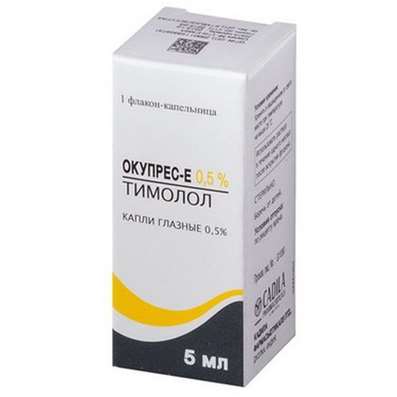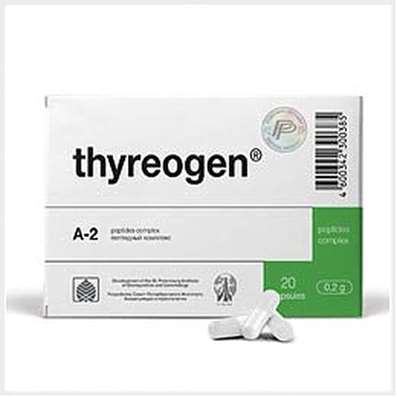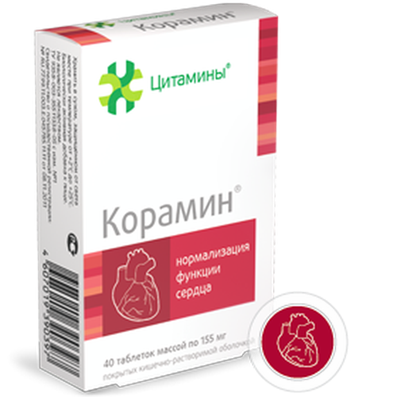Instruction for use: Anti-inhibitor Coagulant Complex
I want this, give me price
Trade name of the drug – Feiba
The Latin name of the substance Anti-inhibitor Coagulant Complex
Anti-inhibitor Coagulant Complex (genus.)
Pharmacological group:
Coagulants (including coagulation factors), hemostatics
Model clinical-pharmacological article 1
Characteristic. The anti-inhibitory coagulant complex also contains factors II, IX and X, predominantly in the non-activated form and activated factor VII. Coagulant Factor VIII antigen (FVIII C: Ag) is present at concentrations up to 0.1 ED per 1 ED of anti-inhibitory coagulant complex. The preparation may contain traces of factors of the kallikrein-kinin system. A solution containing 1 ED of the anti-inhibitory coagulant complex shortens the APTT of the plasma with the inhibitor to factor VIII to 50% of the buffer value (empty sample).
Pharmacotherapy. Prevents the effect of inhibitors on factor VIII both in vitro and in vivo. The exact mechanism of action is not established. The leading role in the mechanism of action is assigned to specific components of the activated prothrombin complex - prothrombin (factor II) and activated factor X (factor Xa).
Indication. Treatment and prevention of bleeding in patients with an inhibitory form of hemophilia A and B, with acquired coagulopathies due to the presence of inhibitors to factors VIII, XI and XII.
Contraindications. DIC-Syndrome (if there is clear indication of DIC-syndrome according to laboratory examination and / or clinical picture, with laboratory, histological and / or clinical signs of liver damage, because of delayed clearance of activated clotting factors, such patients are at increased risk of developing DIC syndrome ), Myocardial infarction, acute thrombosis and / or embolism. These contraindications can be considered relative or absolute, depending on the possibility of using alternative therapies; The preparation can be used only when the use of appropriate coagulation factor concentrates is obviously ineffective, in particular with a high titer of inhibitors.
Dosing. IV infusion, at a speed of no more than 2 U / kg / min. The dose and duration of treatment depend on the severity of hemostasis, localization and severity of bleeding, as well as the clinical condition of the patient. When choosing the dose and frequency of administration should be guided by individual clinical effectiveness.
The recommended dose is 50-100 ED / kg, the maximum single dose is 100 units / kg, the maximum daily dose is 200 units / kg.
Coagulation tests (whole blood clotting time, thromboelastogram and APTT) usually show a slight decrease in the relevant indicators and do not correlate with clinical improvement, therefore these tests are of limited importance for the control of therapy.
Hemorrhages in the joints, muscles and soft tissues: in cases of bleeding of low and medium intensity, the recommended dose is 50-75 U / kg every 12 hours. Treatment should be continued until clear signs of clinical improvement (pain disappearance, joint mobility recovery, reduction of its volume) .
In cases of extensive hemorrhages in the muscles and soft tissues (including retroperitoneal hematoma), the recommended dose is 100 units / kg every 12 hours.
Bleeding from the mucous membranes: the recommended dose is 50 U / kg every 6 hours with close observation of the patient (bleeding site condition, hematocrit dynamics). If the bleeding does not stop, the single dose is increased to 100 U / kg, not exceeding the maximum daily dose of 200 U / kg.
Severe bleeding (including cerebral hemorrhage): a single dose of 100 U / kg every 12 hours. In some cases, the drug can be administered at an interval of 6 hours before achieving a clear clinical improvement, but not exceeding the maximum daily dose.
Surgical interventions: the recommended single dose is 50-100 U / kg every 6 hours, not exceeding the maximum daily dose.
Prevention of bleeding in patients with inhibitory forms of hemophilia A in immunotolerant therapy (ITT) or in the ineffectiveness of ITT: with high titers of inhibitors and frequent bleeding in the history of the drug is prescribed in combination with concentrates of factor VIII in a single dose of 50-100 ED / kg every 12 hours Until the level of the factor VIII inhibitor is reduced to 1 Bethesda unit. If during the ITT programs high doses of factor VIII can not achieve immunological tolerance, then for prevention of bleeding can be shown monotherapy with anti-inhibitory coagulant complex in a single dose of 50-100 ED / kg 3 times a week.
When IV infusion should be used a disposable system for transfusions with a filter.
Side effect. With a high rate of administration: acute pain, numbness of the face and limbs, lowering blood pressure.
Often (more than 1/100): allergic reactions.
Infrequently (more than 1/1000): hives.
Rarely (more than 1/10000 and less than 1/1000): anaphylaxis, DIC syndrome, thromboembolism.
Very rarely (less than 1/10000): myocardial infarction (when the maximum dose is exceeded, and / or with prolonged treatment, and / or in the presence of risk factors for thromboembolism).
Overdose. Symptoms: thromboembolism, DIC-syndrome, myocardial infarction.
Interaction. Do not mix the drug with other solutions of drugs, including. With antifibrinolytic drugs (aminocaproic acid). Before and after the administration of the drug, it is necessary to wash the total venous access with 0.9% NaCl solution.
If necessary, combined therapy with antifibrinolytic drugs, the interval between their administration should be at least 6 hours (aminocaproic acid increases the risk of thrombosis).
Special instructions. It can be used in combination with a factor VIII concentrate for a long time under the ITT program to achieve complete and final elimination of inhibitors to factor VIII, which allows further monotherapy with factor VIII concentrate, as in hemophilia without the presence of inhibitors.
In patients with a presumed or established diagnosis of IHD, as well as with acute thrombosis and / or embolism, the use of the drug is indicated only with life-threatening bleeding.
Patients receiving maximum single doses should be monitored for possible development of DIC syndrome and / or symptoms of acute coronary ischemia. High doses should be given only for the time necessary to stop bleeding.
In the case of clinically pronounced changes in blood pressure and heart rate, difficulty breathing, chest pain and cough, the drug should be immediately discontinued and appropriate diagnostic and treatment measures initiated. Decreased fibrinogen, thrombocytopenia, and / or the presence of fibrin / fibrinogen degradation products, as well as significant lengthening of thrombin time, prothrombin time or APTT, indicate the development of DIC syndrome.
Particular attention should be given to patients on a low-salt diet, The amount of Na + in the maximum daily dose of the drug may exceed 200 mg.
Patients with acquired coagulopathies due to the presence of inhibitors to factors VIII, XI and XII may have both a tendency to bleeding and an increased risk of thrombosis.
The results of laboratory tests conducted to monitor the effectiveness of in vitro treatment, such as APTT, coagulation time and thromboelastogram, may not correlate with clinical improvement. Therefore, attempts to achieve normalization of these indicators by increasing the dose of the drug may be unsuccessful, and the risk of developing DIC syndrome as a result of an overdose increases.
Since the implementation of the drug requires the presence of a significant number of functionally active platelets, in the case of an inadequate response to treatment, it is recommended to control the number of platelets.
The safety of the drug during pregnancy and lactation is not established. Experiments on animals do not allow us to judge the safety of the drug with respect to the effect on reproductive function, the development of the embryo or fetus, the course of pregnancy, the peri- and postnatal period. In connection with an increased risk of thrombosis during pregnancy, the drug should be prescribed only in the absence of alternative treatments and subject to careful medical supervision.
The drug solution is prepared immediately before administration. The prepared solution should be used immediately (the preparation does not contain preservatives). Mud solutions or solutions with inclusions should not be used. All unused solutions must be disposed of properly.
1 Betezd unit is defined as the amount of antibody inhibiting 50% of factor VIII activity in fresh standard human plasma after incubation for 2 hours at 37 ° C.
The drug is made from human plasma. When using medicines prepared from human plasma, it is impossible to completely eliminate the risk of transmission of infectious diseases of both known and unknown origin. However, the risk of transmission of infections is minimized as a result of careful selection of donors by screening and laboratory screening of individual plasma doses and plasma pools for HBsAg, anti-HIV and anti-HCV antibodies; Testing of plasma pools by polymerase chain reaction on HBV, HCV, HIV-1 and HIV-2 and parvovirus B19; Technological stages for the removal and inactivation of viruses and other pathogens in the production process. The effectiveness of these technologies is confirmed for human immunodeficiency viruses, hepatitis A, B and C viruses.
The techniques used to remove and inactivate can be limited in effectiveness against certain non-enveloped viruses, such as, for example, parvovirus B19. Infection with parvovirus B19 can be dangerous for pregnant women (infection of the fetus) and patients with immunodeficiency or increased erythrocyte decay (eg, hemolytic anemia).
Vaccination of patients receiving coagulation factor concentrates against hepatitis A and B should be envisaged.

 Cart
Cart





